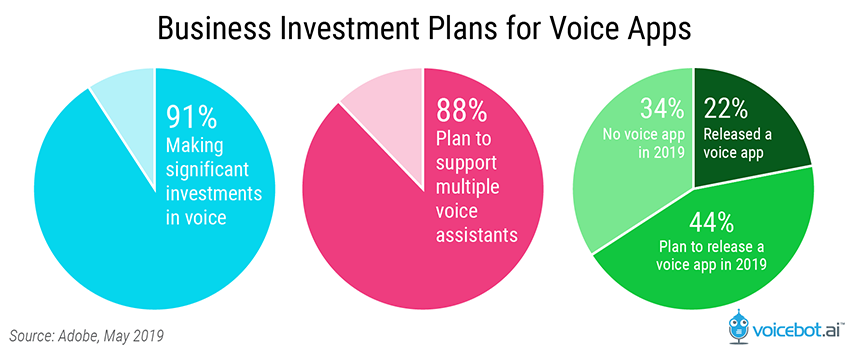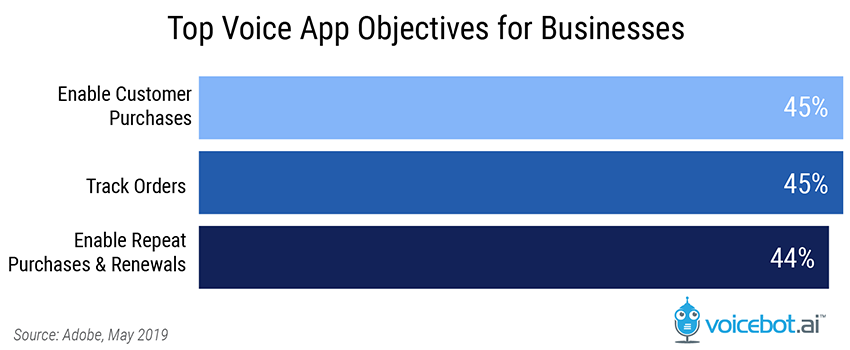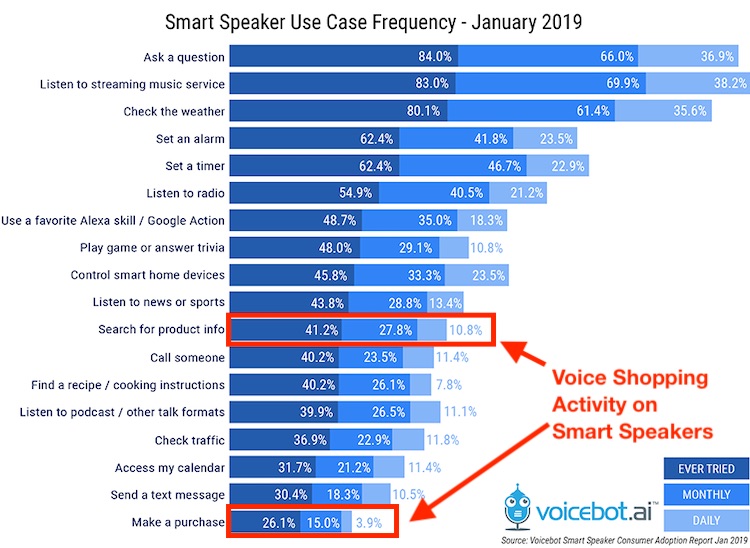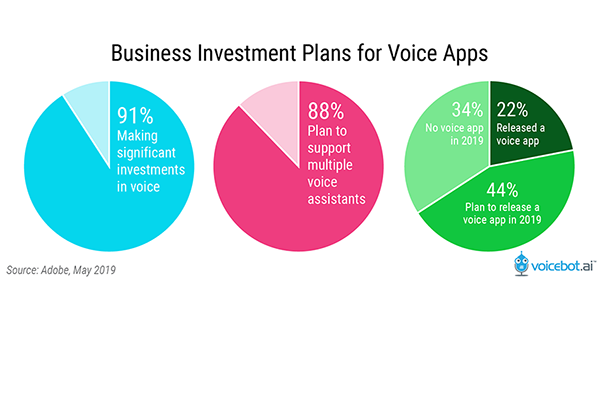Adobe Says 91% of Business Decision Makers Investing in Voice Today and Voice Commerce is the Top Objective of 45%
- An Adobe survey says 91% of “business decision makers” are making significant investments in voice technologies
- 88% responded that they intend to support multiple voice assistants such as Amazon Alexa, Google Assistant, and Apple Siri
- Adobe says 22% of businesses surveyed have launched a voice app and 44% plan to do so in 2019
- The top three objectives for voice initiatives are all voice commerce related including purchases and order tracking
Adobe is talking about a new survey it conducted with 401 “business decision makers” and says that 91% claim they are already making “significant investments in voice” today while 94% say they will increase their investment over the next year. And, these investments will not go to support a single assistant ecosystem. Adobe found that 88% of those surveyed said they planned to support multiple voice assistants such as Alexa, Google Assistant, and Siri.

Twenty-two percent of those surveyed said they had already launched a voice app and 44% expect to do so in 2019. That would suggest voice apps for businesses may double in 2019 and as many as two-thirds will have a voice app of some kind published.
This survey sample may be a bit skewed toward early adopters as CMO.com reports that “59% of [participants] are in leadership roles and 41% of whom are practitioners, across different functional areas and industries.” Multi-industry practitioners in the Adobe world will generally translate into agencies, consultants, and other service providers which have a higher likelihood of working with clients on new technologies. However, the trend data seems about right as many large companies are looking closely at voice technologies today and some of this may be customer service oriented.
Voice Commerce is the Top Objective
The report says that voice commerce was the top objective cited by survey participants at 45% wanting to enable purchases followed closely by order tracking also at 45% and the ability to make repeat purchases 44%. That means the top three objectives for these businesses were all commerce related. 
About two-thirds or the survey takers believe that their voice presence will enable lead conversion while 29% have enabled some sort of voice purchasing through their earlier voice app launch. This again, seems a bit high, as there are few Alexa skills and Google Actions that explicitly enable voice ordering, but there is clearly strong interest. Other expected benefits beyond revenue generation are improved user experience (71%), increased consumer engagement (65%), and higher customer loyalty (64%). Heidi Besik, group product marketing manager at Adobe, told CMO.com that voice commerce may be conducted differently than what we are accustomed to on the web and mobile.
“Many have doubted the potential of voice-based shopping because they expected it to drive activity in the same way that websites do. A similar misconception happened when mobile shopping began to take off. Similar to mobile, voice has the ability to support the overall shopping experience. It certainly has the potential to drive new purchases, and brands are focusing on that. But even more important is how services like order tracking, quick refills, and product research can create more loyal shoppers who may close the deal elsewhere.”
This is consistent with Voicebot’s primary research around consumer behaviors and sentiment. The 2019 Smart Speaker Consumer Adoption Report found that monthly product search by voice (27.8%) was about two times more common than actual voice purchases (15.0%).

Voicebot’s Voice Shopping Consumer Adoption Report of 2018 also went into great detail on both consumer voice shopping habits as well as differentiating between purchase impact and the actual order placement. Voice has many ways to impact the revenue cycle for consumer brands and it looks like the business decision makers cited by Adobe see that potential.
Follow @bretkinsella Follow @voicebotai
Juniper Forecasts $80 Billion in Voice Commerce in 2023, or $10 Per Assistant
EZNeeds Launches Voice Shopping Alexa Skill with Help of Blutag









